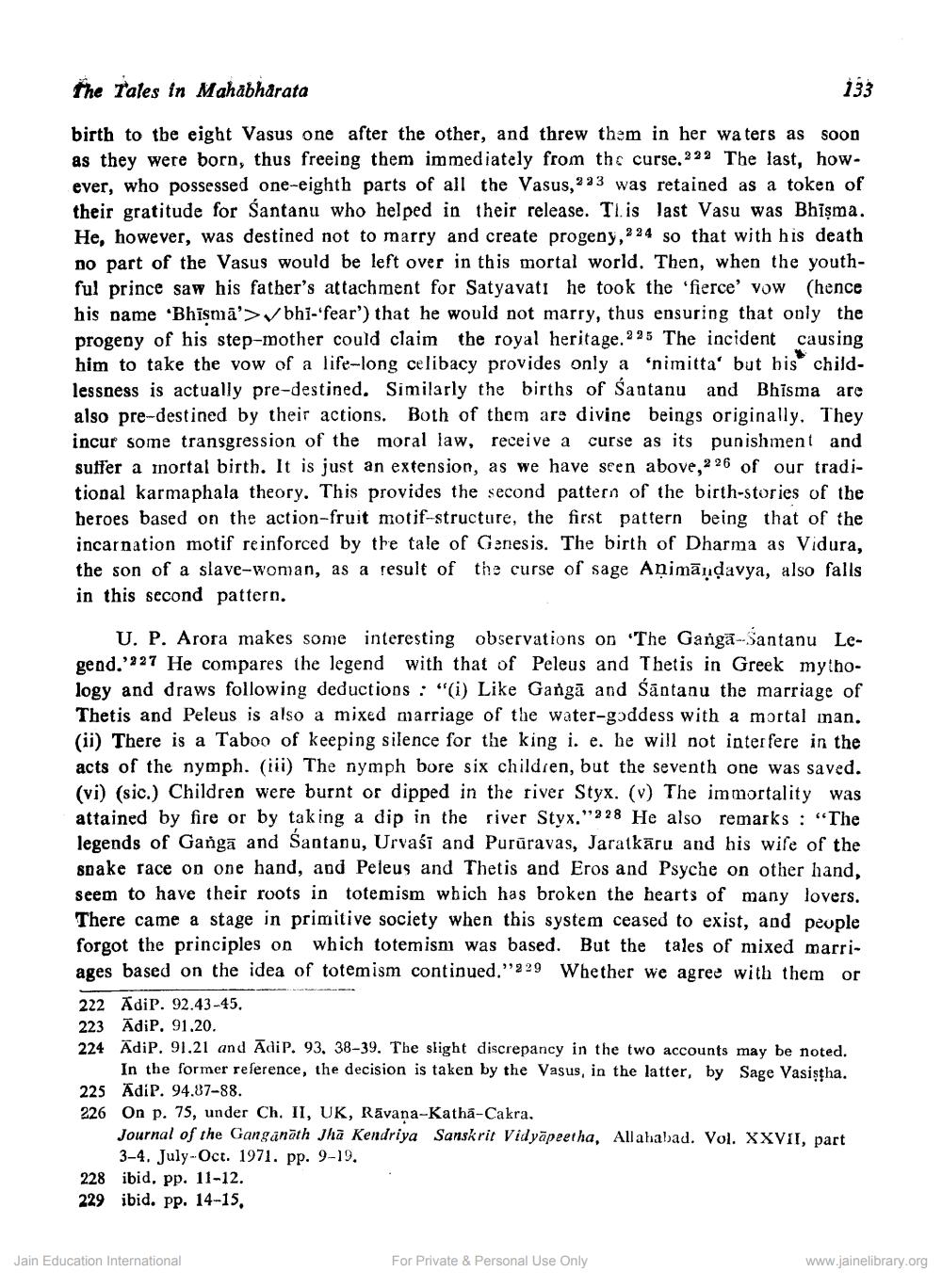________________
133
the Tales in Mahabharata birth to the eight Vasus one after the other, and threw them in her waters as soon as they were born, thus freeing them immediately from the curse. 222 The last, however, who possessed one-eighth parts of all the Vasus, 323 was retained as a token of their gratitude for Santanu who helped in their release. Tl.is last Vasu was Bhīşma. He, however, was destined not to marry and create progeny, 224 so that with his death no part of the Vasus would be left over in this mortal world. Then, when the youthful prince saw his father's attachment for Satyavati he took the 'fierce' vow (hence his name 'Bhīşmā'><bhi-'fear') that he would not marry, thus ensuring that only the progeny of his step-mother could claim the royal heritage. 2 25 The incident causing him to take the vow of a life-long celibacy provides only a 'nimitta' but his childlessness is actually pre-destined. Similarly the births of Santanu and Bhisma are also pre-destined by their actions. Both of them are divine beings originally. They incur some transgression of the moral law, receive a curse as its punishment and suffer a mortal birth. It is just an extension, as we have seen above, 2 26 of our traditional karmaphala theory. This provides the second pattern of the birth-stories of the heroes based on the action-fruit motif-structure, the first pattern being that of the incarnation motif reinforced by the tale of Genesis. The birth of Dharma as Vidura, the son of a slave-woman, as a result of the curse of sage Animāndavya, also falls in this second pattern.
U. P. Arora makes some interesting observations on "The Ganga-Santanu Legend.'227 He compares the legend with that of Peleus and Thetis in Greek mythology and draws following deductions : "(i) Like Gangā and sāntanu the marriage of Thetis and Peleus is also a mixed marriage of the water-goddess with a mortal inan. (ii) There is a Taboo of keeping silence for the king i. e. he will not interfere in the acts of the nymph. (iii) The nymph bore six children, but the seventh one was saved. (vi) (sic.) Children were burnt or dipped in the river Styx. (v) The immortality was attained by fire or by taking a dip in the river Styx."228 He also remarks : “The legends of Ganga and Santanu, Urvaśī and Purūravas, Jaratkāru and his wife of the spake race on one hand, and Peteus and Thetis and Eros and Psyche on other hand, seem to have their roots in totemism which has broken the hearts of many lovers. There came a stage in primitive society when this system ceased to exist, and people forgot the principles on which totemism was based. But the tales of mixed marriages based on the idea of totemism continued."229 Whether we agree with them or 222 AdiP. 92.43-45. 223 Ādip, 91.20. 224 Adip. 91.21 and AdiP. 93. 38-39. The slight discrepancy in the two accounts may be noted.
In the former reference, the decision is taken by the Vasus, in the latter, by Sage Vasiştha. 225 AdiP. 94.87-88. 226 On p. 75, under Ch. II, UK, Rāvana-Katha-Cakra.
Journal of the Ganganāth Jhā Kendriya Sanskrit Vidyāpeetha, Allahabad. Vol. XXVII, part
3-4. July-Oct. 1971. pp. 9-19, 228 ibid. pp. 11-12. 229 ibid. pp. 14-15.
Jain Education International
For Private & Personal Use Only
www.jainelibrary.org




